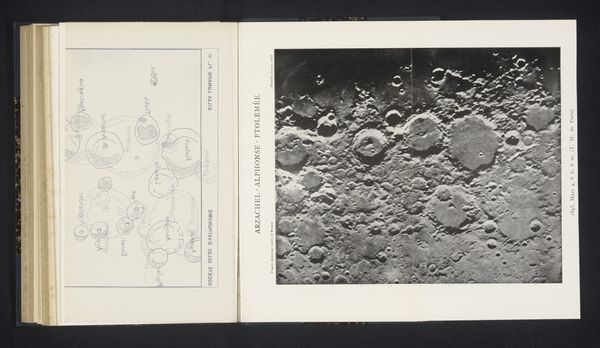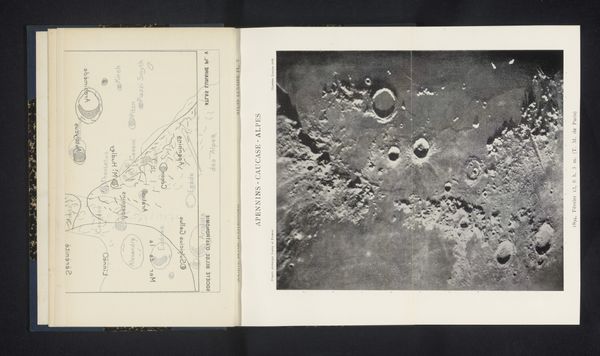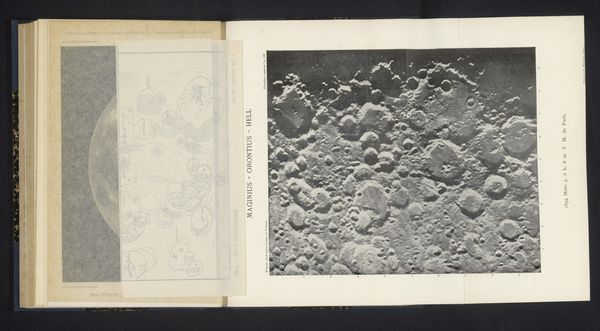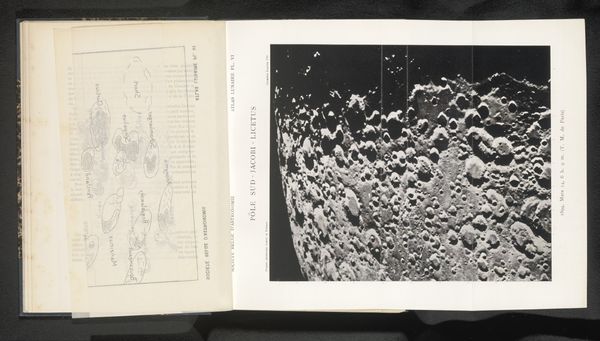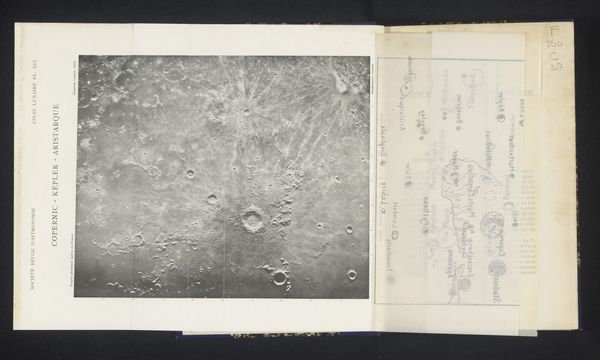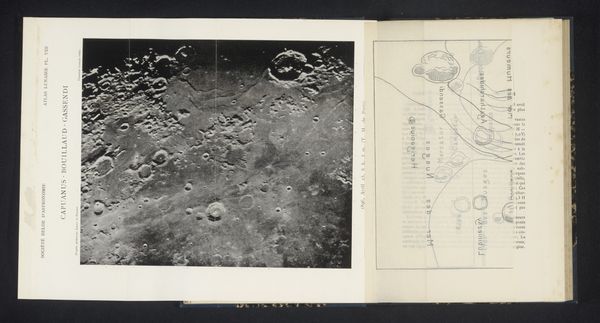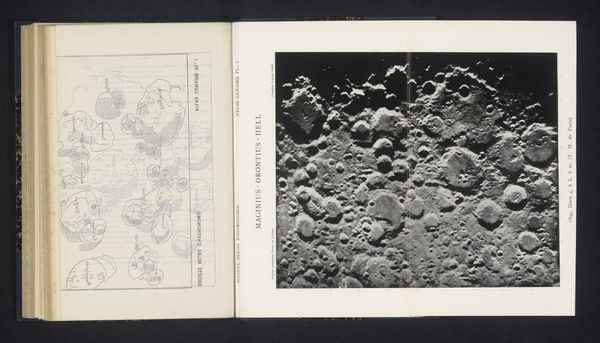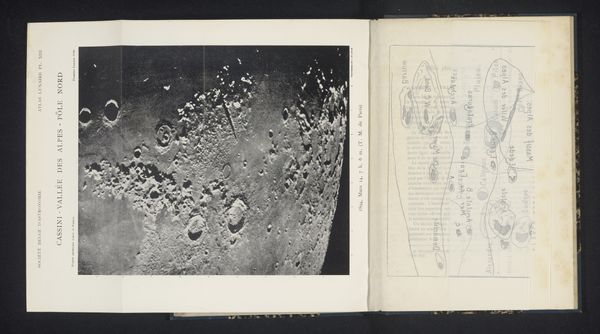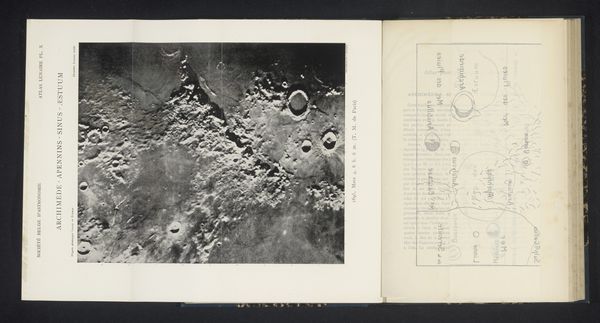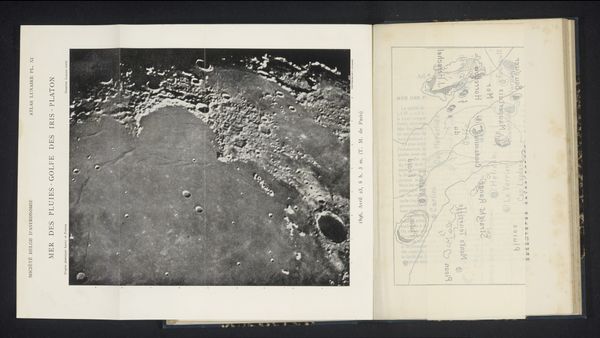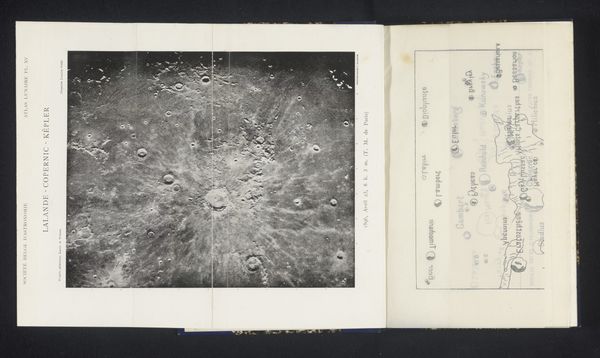
print, paper, photography, engraving
#
aged paper
#
homemade paper
#
paperlike
# print
#
hand drawn type
#
landscape
#
paper
#
photography
#
hand-drawn typeface
#
geometric
#
thick font
#
handwritten font
#
delicate typography
#
academic-art
#
engraving
#
historical font
#
small font
Dimensions: height 220 mm, width 184 mm
Copyright: Rijks Museum: Open Domain
This image by Loewy et Puiseux presents us with a stark vision of the moon, its surface densely marked with craters. These craters, circular and cavernous, evoke a sense of ancient impact and enduring presence. Throughout history, circular forms have held profound significance: consider the Ouroboros, the snake eating its tail, symbolizing cyclicality, eternal return, and the containment of primal energy. Similarly, mandalas, with their circular designs, serve as maps of the cosmos, tools for meditation, and symbols of wholeness. The craters mirror this visual language, inviting us to contemplate the moon as a mirror reflecting humanity’s quest for understanding, progress, and knowledge. In earlier times, when stargazers turned their telescopes toward the night sky, the moon's surface was a vast, mysterious symbol. Now, through images like these, the symbol becomes something that is mapped and measured. The visual impact of this work is strong, drawing us into the craters' depths. Through the cyclical nature of symbols, we continue to be drawn into the depths of the cosmos.
Comments
No comments
Be the first to comment and join the conversation on the ultimate creative platform.
